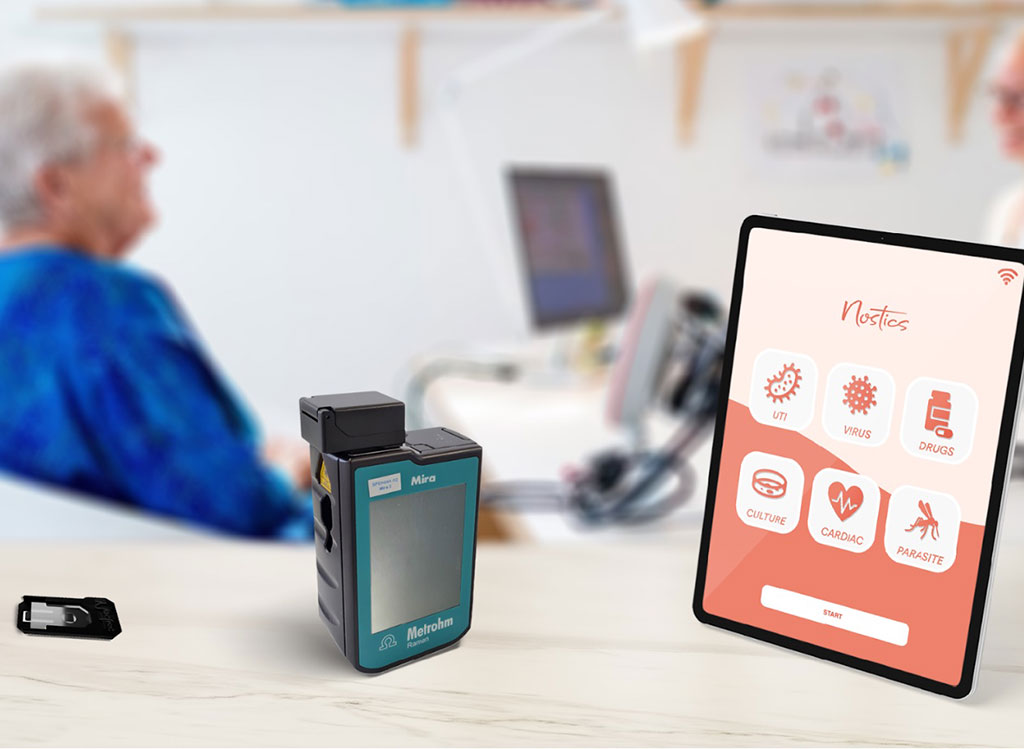Handheld Lab to Enable Faster, Cheaper Point-of-Need Bacterial Infection Identification
|
By HospiMedica International staff writers Posted on 30 Oct 2022 |

Antimicrobial resistance (AMR) is the unresponsiveness of bacteria to a certain antibiotic due to mutations or resistance genes the species has gained. This is a natural process, however, with the copious amounts of antibiotics that are used, this process is highly accelerated and becomes a danger to our healthcare system. For most people, treatment for bacterial infections is based merely on symptoms, which increases the chance of misdiagnosis and prolonged disease course. Now, instant, accessible, reliable testing for viruses and bacteria will be soon made possible by the world’s smallest portable bacteria identification lab that uses cloud-based, machine learning algorithms to identify bacterial species in five minutes, without the need for expert users or expensive lab infrastructure.
Nostics B.V. (Amsterdam, The Netherlands) is taking spectroscopy where it has never been before: bacterial identification. By combining spectroscopy with nanotechnology and advanced AI classification, the company will soon launch a novel diagnostic tool for point-of-care (PoC) bacterial infection identification. The new digital diagnostics platform from Nostics can provide fast and accurate diagnostics for bacterial infections without the need for costly labs.
The Nostics PoC solution can fit in a backpack, making diagnostics accessible which is the key to combating AMR. By using a handheld device, Raman spectroscopy, cutting-edge nanosurfaces and advanced AI algorithms, the platform has the potential to change the lives of people in places without access to bacterial diagnostics and accelerate this access in countries with more developed healthcare facilities.
Related Links:
Nostics B.V.
Latest Point of Care News
Channels
Critical Care
view channel
Mechanosensing-Based Approach Offers Promising Strategy to Treat Cardiovascular Fibrosis
Cardiac fibrosis, which involves the stiffening and scarring of heart tissue, is a fundamental feature of nearly every type of heart disease, from acute ischemic injuries to genetic cardiomyopathies.... Read more
AI Interpretability Tool for Photographed ECG Images Offers Pixel-Level Precision
The electrocardiogram (ECG) is a crucial diagnostic tool in modern medicine, used to detect heart conditions such as arrhythmias and structural abnormalities. Every year, millions of ECGs are performed... Read moreSurgical Techniques
view channel
Bioprinted Aortas Offer New Hope for Vascular Repair
Current treatment options for severe cardiovascular diseases include using grafts made from a patient's own tissue (autologous) or synthetic materials. However, autologous grafts require invasive surgery... Read more
Early TAVR Intervention Reduces Cardiovascular Events in Asymptomatic Aortic Stenosis Patients
Each year, approximately 300,000 Americans are diagnosed with aortic stenosis (AS), a serious condition that results from the narrowing or blockage of the aortic valve in the heart. Two common treatments... Read more
New Procedure Found Safe and Effective for Patients Undergoing Transcatheter Mitral Valve Replacement
In the United States, approximately four million people suffer from mitral valve regurgitation, the most common type of heart valve disease. As an alternative to open-heart surgery, transcatheter mitral... Read morePatient Care
view channel
Portable Biosensor Platform to Reduce Hospital-Acquired Infections
Approximately 4 million patients in the European Union acquire healthcare-associated infections (HAIs) or nosocomial infections each year, with around 37,000 deaths directly resulting from these infections,... Read moreFirst-Of-Its-Kind Portable Germicidal Light Technology Disinfects High-Touch Clinical Surfaces in Seconds
Reducing healthcare-acquired infections (HAIs) remains a pressing issue within global healthcare systems. In the United States alone, 1.7 million patients contract HAIs annually, leading to approximately... Read more
Surgical Capacity Optimization Solution Helps Hospitals Boost OR Utilization
An innovative solution has the capability to transform surgical capacity utilization by targeting the root cause of surgical block time inefficiencies. Fujitsu Limited’s (Tokyo, Japan) Surgical Capacity... Read more
Game-Changing Innovation in Surgical Instrument Sterilization Significantly Improves OR Throughput
A groundbreaking innovation enables hospitals to significantly improve instrument processing time and throughput in operating rooms (ORs) and sterile processing departments. Turbett Surgical, Inc.... Read moreHealth IT
view channel
Printable Molecule-Selective Nanoparticles Enable Mass Production of Wearable Biosensors
The future of medicine is likely to focus on the personalization of healthcare—understanding exactly what an individual requires and delivering the appropriate combination of nutrients, metabolites, and... Read more
Smartwatches Could Detect Congestive Heart Failure
Diagnosing congestive heart failure (CHF) typically requires expensive and time-consuming imaging techniques like echocardiography, also known as cardiac ultrasound. Previously, detecting CHF by analyzing... Read moreBusiness
view channel
Expanded Collaboration to Transform OR Technology Through AI and Automation
The expansion of an existing collaboration between three leading companies aims to develop artificial intelligence (AI)-driven solutions for smart operating rooms with sophisticated monitoring and automation.... Read more


















